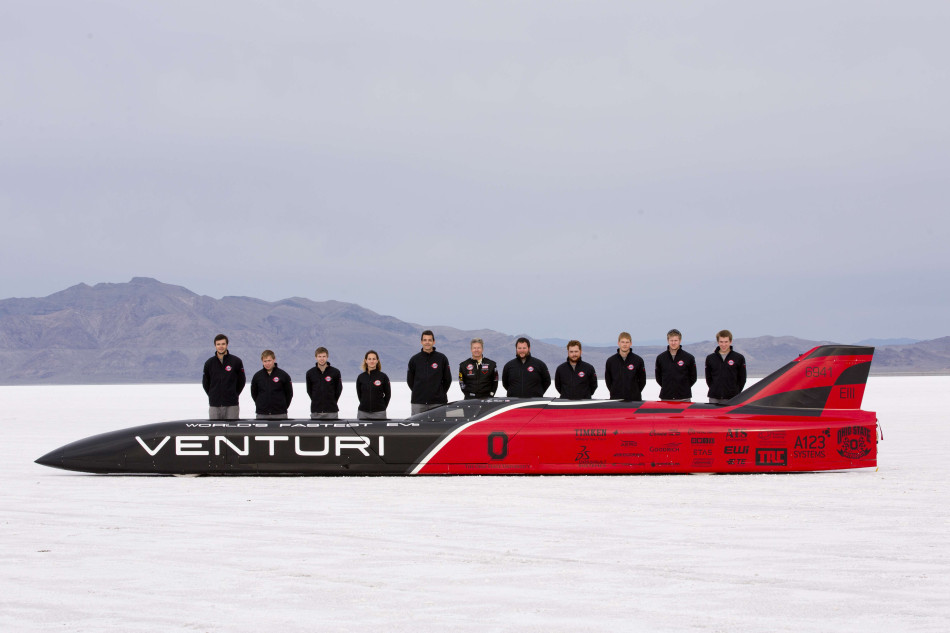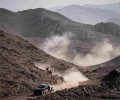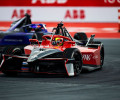Charging into the Unknown

How did you find your way into motor sport?
No one in my family was involved in motor sport but most of my friends had their first motorcycle at 16 years of age and were very interested in cars. I guess that’s when the idea that I could work in the automotive industry came up. Then I discovered motor sport through Formula One and rallying and decided I wanted to be part of it.
And that’s exactly what I told the examiners during the interview required for the mechanical engineering school I applied to. However, they replied that everybody else attending the interview had the same desire! They said I had very little chance of succeeding but that only doubled-up my motivation!
I worked very hard to get the best placements and I contacted – nearly hassled – several Le Mans Series and F1 teams and finally got my entry card in Formula One with Williams. I worked a year and a half there, in both the KERS (Kinetic Energy Recovery System) and suspension departments. Unfortunately, I couldn't get a permanent job, so I moved on.
And that’s when you joined electric car company Venturi?
Yes, I joined Venturi Automobiles in December 2009 as a Research and Development Engineer. I quickly moved into project management and am now the Project Manager of two of the company’s Global Challenges – the VBB-3 land speed record program, and the Antarctica project.
The VBB-3 project is an attempt to set the outright land speed record for an electric vehicle. What was the status of the project when you joined?
Our President, Gildo Pallanca Pastor, has always expressed his wish to demonstrate the capabilities of electric vehicles and following his impulsion Venturi started to work with the Ohio State University (OSU) in 2009 and beat two world land speed records in 2009 and 2010 respectively with the Buckeye Bullet 2 (a fuel-cell powered vehicle), and the Buckeye Bullet 2.5 (a battery powered streamliner).
When I joined the program in early 2011 it was right at the beginning of the VBB-3 project: the discussion had just started between the OSU and Venturi to design and develop a brand new full electric and four-wheel driven streamliner aiming to break the 400mph barrier.
How has the projects developed in the time since you joined?
It took us a year-and-a-half to design the complete vehicle, from chassis to suspension, electronics, driver safety cell, battery pack and electric powertrain. Another six months were needed to build and assemble the streamliner, which left us very little time to test it on a circuit – where the length and quality of the track makes it impossible to go above a 100mph – before going to Bonneville [in Utah, USA] in September of 2013 where we wanted to test the car and try to beat our own record of 307mph [495kph].
Unfortunately, some terrible weather prevented the attempt and we could only test on the nearby Wendover Airfield runway, where we established our base camp, as the Salt Flat was completely flooded.
We knew that no tests or record-breaking attempts would be possible before August 2014 and so we decided to use those 12 months to test, modify and improve several main parts of the vehicle such as the suspension, the vehicle control code as well as the electric powertrain.
It sounds unbelievable but 12 months later the record attempts were again hampered, by even worse weather. Indeed, it was the worst the region had seen for some decades with portions of the track under 25cm of water. However, you did manage to set one new record. Tell us about the frustrations but also the reward of setting a new record?
We arrived in Bonneville in August… at the same time as a huge storm, which turned the Salt Flat into a real lake… again. I think there are no words to express the frustration we felt at this moment.
Speed Week was cancelled by the SCTA (Southern California Timing Association) for the first time in 32 years, and for us it meant no test was possible before our private FIA event scheduled for the following week.
Gildo decided the team should stay and wait, hoping the Salt Flat would dry enough in 10 days. The FIA and the ACCUS-USAC organisers were very kind and did their best to enable us to run for the first time on the salt with this brand new vehicle.
With only three days to run on the Salt Flat instead of the 12 initially planned, we couldn’t test everything we wanted to before making a few attempts, and therefore we didn’t reach the full power and speed capabilities of the vehicle. However, we still set a new FIA homologated world speed record in this category (electric vehicles over 3,500 kg) with 212mph and a top speed of 270mph. This result, even if lower than expected, was a great reward to the work achieved by the team during the past years and the nerve-breaking past weeks; and it did freshen up our motivation to come back and go even faster!
What’s the future for the project now? Will there be another record attempt next year?
The development work on the powertrain we started last year is still going on and we plan to be back on the salt flats next summer to break the 400mph barrier.
How far do you think the technology involved can be pushed?
The battery and electric powertrain technology used in the VBB-3 is already very innovative with a battery pack composed of 2,000 lithium-ion power cells capable of supplying more than 2MW to two very compact electric motors (one powering the front axle, the other the rear one).
The development and improvement work started in 2013 should allow us to push the electric motor technology even further, reaching a power of 1000 kW and a maximum torque of 1400 Nm per motor.
Are there ‘real world’ applications for the technology or is it a theoretical exploration?
The goal of this program is not only to demonstrate that electric vehicles can be as reliable, powerful and as fast as ICE-powered vehicles, but also to develop the technology used for road and ‘real world’ applications. The land speed record program is often characterised as a technological laboratory and we try to re-use the experience it provides in our own sports and race vehicles like the America or maybe in our Formula E car.
What are the best aspects of your job? What motivates you to continue with it?
I think what I like the most is that I have been able to work on various projects and every one of them has been a real challenge. I particularly want to see the VBB-3 achieve what it has been designed for: pushing the limits of EVs, breaking a new record and approaching – if not beating – the ICE-powered vehicle record of 459mph.

 Facebook
Facebook Twitter
Twitter






